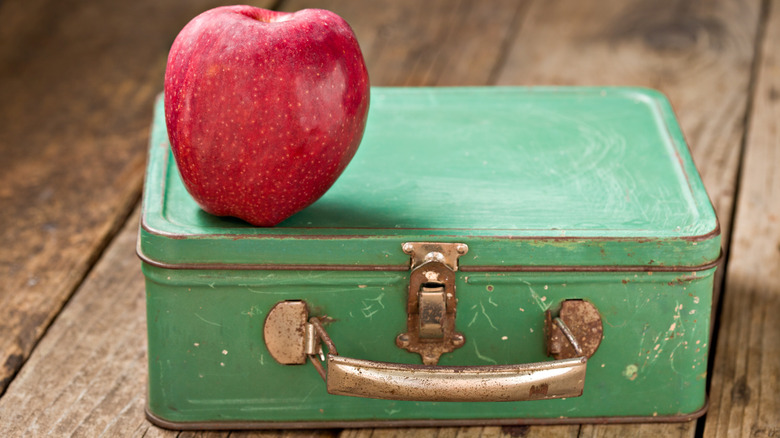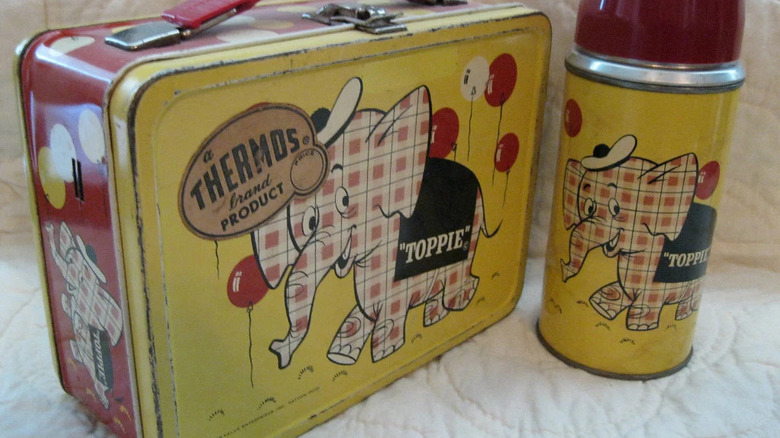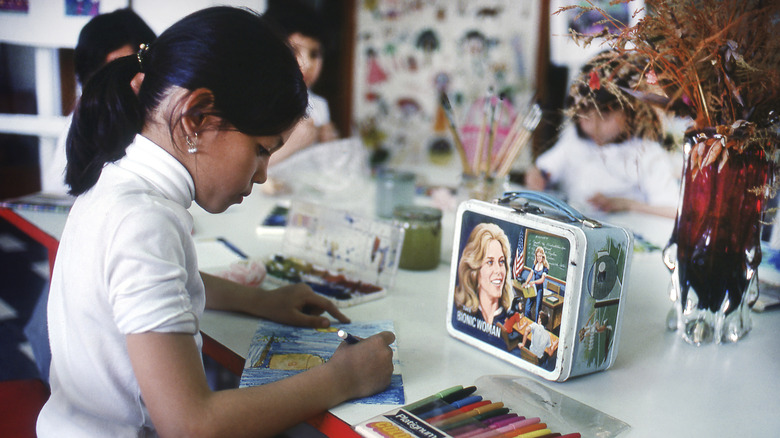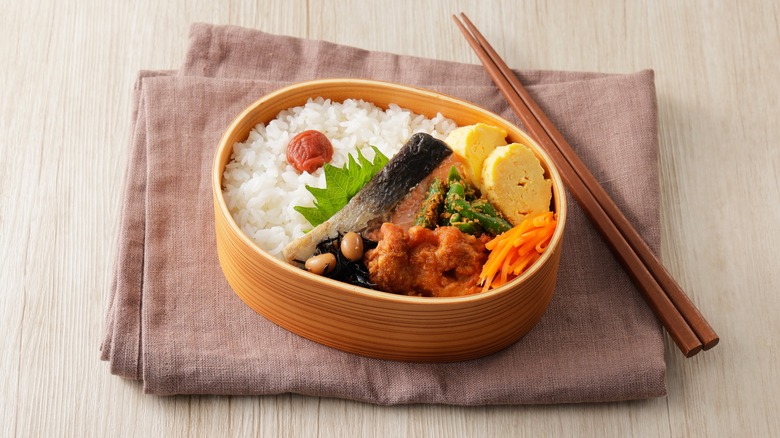This Is Why Classic Lunch Boxes Were Made Of Metal
We may receive a commission on purchases made from links.
If you're of a certain age, you probably remember your first clunky metal lunch box. Emblazoned with everything from Teenage Mutant Ninja Turtles to Barbie, these tin containers were a required accessory for American schoolchildren for decades. But why were these classic food carriers made of metal?
The story of the metal lunch box begins not in school, in fact, but rather in the mines. In the late 19th century, coal miners and construction workers needed sturdy containers to protect their food from hazardous work environments. Tin and steel pails were the answer, shielding sandwiches and other portable lunches from musty tunnels and dirty construction sites.
Schoolchildren, who similarly had to bring lunch with them, began to mimic these workers — often their fathers — repurposing old tobacco or cookie tins into lunch carriers of their own. These makeshift boxes were tough and durable — perfect for the long trek to school in rural areas where popping back home for lunch wasn't feasible.
The first purpose-built children's lunch boxes appeared in 1902 and were metal simulations of woven picnic baskets. The shape slowly morphed into the rectangular form you're likely familiar with. In 1935, Mickey Mouse became the first character emblazoned on such a lunch box. But it was an innovation from a company called Aladdin Industries in 1950 that changed everything.
The golden age of the metal lunch box
Aladdin Industries realized it could plaster a children's lunch box with the hottest television character — Hopalong Cassidy — in a way that was novel, fresh, and not so timeless. This meant every kid wanted the new lunch box, and each year they would want another updated one. Suddenly, the industry of licensed, decorated lunch boxes was born.
From Superman battling robots to the Beatles in their pressed suits, these metal lunch boxes became the hottest accessory for kids to have. According to the Thad Reece, a lunch box collector, over 120 million metal boxes with more than 450 designs were sold between 1950 and 1970 (per HISTORY).
Collectors today still hunt for gems like the ultra-rare "Toppie" metal lunch box, adorned with a plaid elephant, which could only be purchased with grocery store stamps and was not widely produced. At the Lunch Box Museum in Columbus, Georgia, over 5,000 items — from metal lunch boxes to trays to thermoses — are on display, reflecting a time when pop culture was best expressed with appetite.
The decline of the metal lunch box
The era of the metal lunch box ended in the mid-1980s, when plastic and vinyl alternatives, which had become less expensive to produce, began to dominate the market. While some attribute the metal lunch box's demise to a campaign by concerned parents who feared children would weaponize the sturdy containers, there is no evidence of widespread incidents or related legislation. The shift was more likely driven by manufacturing economics.
By the time the Thermos company produced what is believed to be the last licensed metal lunch box — featuring Rambo in 1985 — the era had come to a close. Today, lunch boxes are often soft-sided, typically made with polyester, neoprene, or plastic. And though today's zippered lunch sacks do sometimes feature a favorite character, there is something to be said for the vintage charm of the tin lunch box.
The lunch box around the world
Though the metal, TV-character-licensed lunch box was a definitively American trend, the concept of the lunch box is not at all unique to the United States. People around the world have a variety of methods and traditions for lugging their lunches to work or school. In India, for example, the tiffin box is a multi-tiered set of circular steel containers designed for hot meals, stacked with rice, bread, and curries — often delivered daily to office workers by dabbawalas, men who transport the delicious offerings across bustling cities.
The dosirak is a Korean boxed lunch often packed with rice, eggs, kimchi, and various other dishes in neat little containers, sometimes made of metal. With the massive popularity of the Korean show "Squid Game," the featured dosirak gained even more global renown.
In Japan, they have the delicious and traditional bento box. These cute little packed lunches have their origins as far back as the 1100s, when soldiers carried dried rice called hoshi-ii. By the 1500s, carved wooden bento boxes became popular among travelers and even theatergoers. Today's bento boxes are incredibly varied and a favorite for workers and busy commuters. A particularly unique example is the ekiben, a special type of bento box sold at train stations across Japan.




